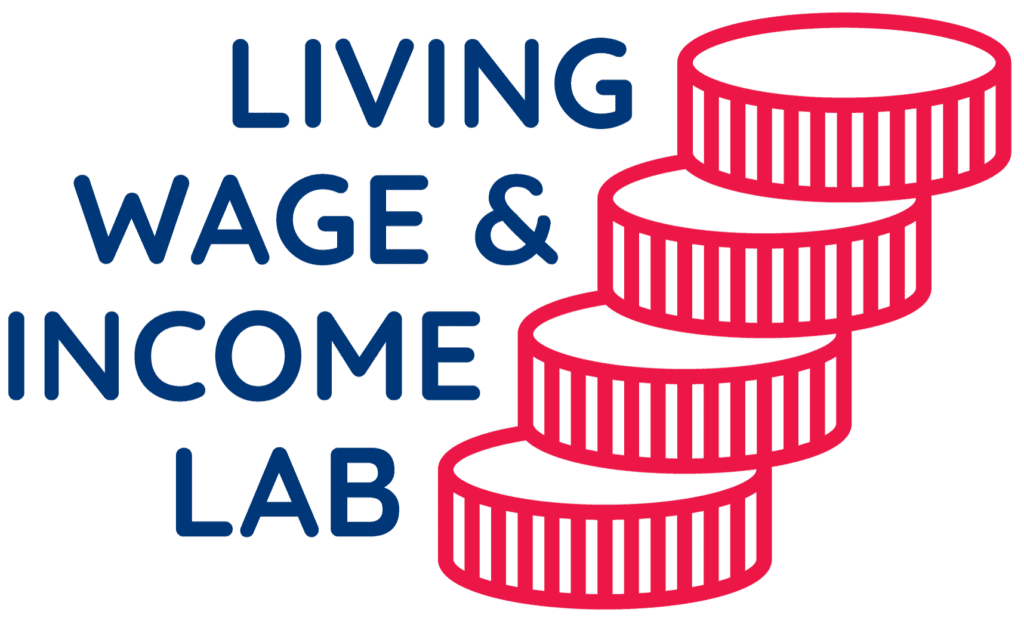Last April 18th participants of the Living Wage Lab came together at the New World Campus in The Hague for the first real interactive Lab session this year- and interactive it was! Through a role play, participants had the chance to experience a living wage dialogue up and down the supply chain and to experience it from another angle than the one they are usually in.
A toolkit to work towards a living wage
After a short introduction on the Lab approach, all participants presented themselves and their activities on living wage and living income. The Lab’s plan for developing a living wage toolkit this year was presented by Sven Renon from True Price. In the coming months, True Price will conduct a needs assessment as a first phase of this project. This will include interviewing Lab participants regarding their needs and the barriers they face in their work to realise living wages.
This assessment will shape an overview of existing tools, gaps and a plan for the development of a toolkit. The toolkit will help businesses by providing practical and concrete steps in defining and implementing a living wage strategy. If you have questions or want to share ideas for the toolkit with True Price, please contact Sven Renon at sven@trueprice.org.
Existing living wage tools
The conversation on tools for living wages is not new and several tools have been already developed.
During the session, Elsbeth Fabels from the Dutch Association of World Shops and consultant Frans Papma presented several tools that the World Fair Trade Organisation (WFTO) has developed. Members use these throughout the supply chain, from producer to retailer.
The first tool is the Living Wage Ladder. It demonstrates how wages compare to living wage estimates and to a minimum wage. It can be used to visualize the living wage gap, or to steer discussions around ‘moving up the ladder’. The Living Wage Calculator is a simplified version of the Anker calculator. It is used to calculate the living wage of workers in a regional context. The Pricing Tool is used to determine the additional product costs for paying workers a living wage. It gives insight in the profit margins of each player in the supply chain. Finally, the local Context Notes gives context to the factors that determine wages in a specific region, such as other work opportunities and safety in the region. This is to understand where the opportunities lie for wage improvement.
Moving up the ladder usually starts with internal negotiations and dialogue. This is followed by a process of dialogue with all stakeholders in the supply chain and with external stakeholders.
Living wage role play
The Lab participated in a role play, whereby the demonstrated tools were applied to a case of gifts production in Indonesia. Each participant was assigned to a node in the value chain: either worker, producer, importer or retail. The participants practiced negotiating on prices and living wages with another node in the supply chain.
Before the dialogue along the supply chain started, each group pre-discussed its negotiation strategy. Although done in a light-hearted way, the experiment reflected the harsh reality of these negotiations. As the discussion moved from node to node in the supply chain, the human aspect of the production process disappeared from the conversations.
Analysing the roleplay and the usability of the tools for the agri-food sector, the participants had doubts whether complete transparency on margins of each actor in the supply chain would be realistic or even desired. Supply chain actors for example might have a relatively high margin on one product but they compensate these with other products in their portfolio where returns might be failing or they might use them for making investments in product innovation for example.
The costing price tool helps in demonstrating that additional costs to realise a living wage are very limited, provided that the various nodes in the supply chain do not charge additional margins. A clause in the contracts throughout the supply chain could further assure this.
Another negotiation strategy could be to bring multiple supply chain actors together to discuss living wages in a specific supply chain. The importance of a sector-wide approach was also discussed, as well as promoting Collective Bargaining Agreements (CBAs) in sectors or countries to create the necessary systemic change. Participants concluded that openness and dialogue are instrumental in working and negotiating towards living wages. The tools of WFTO can provide guidance to enter those negotiations well prepared.



